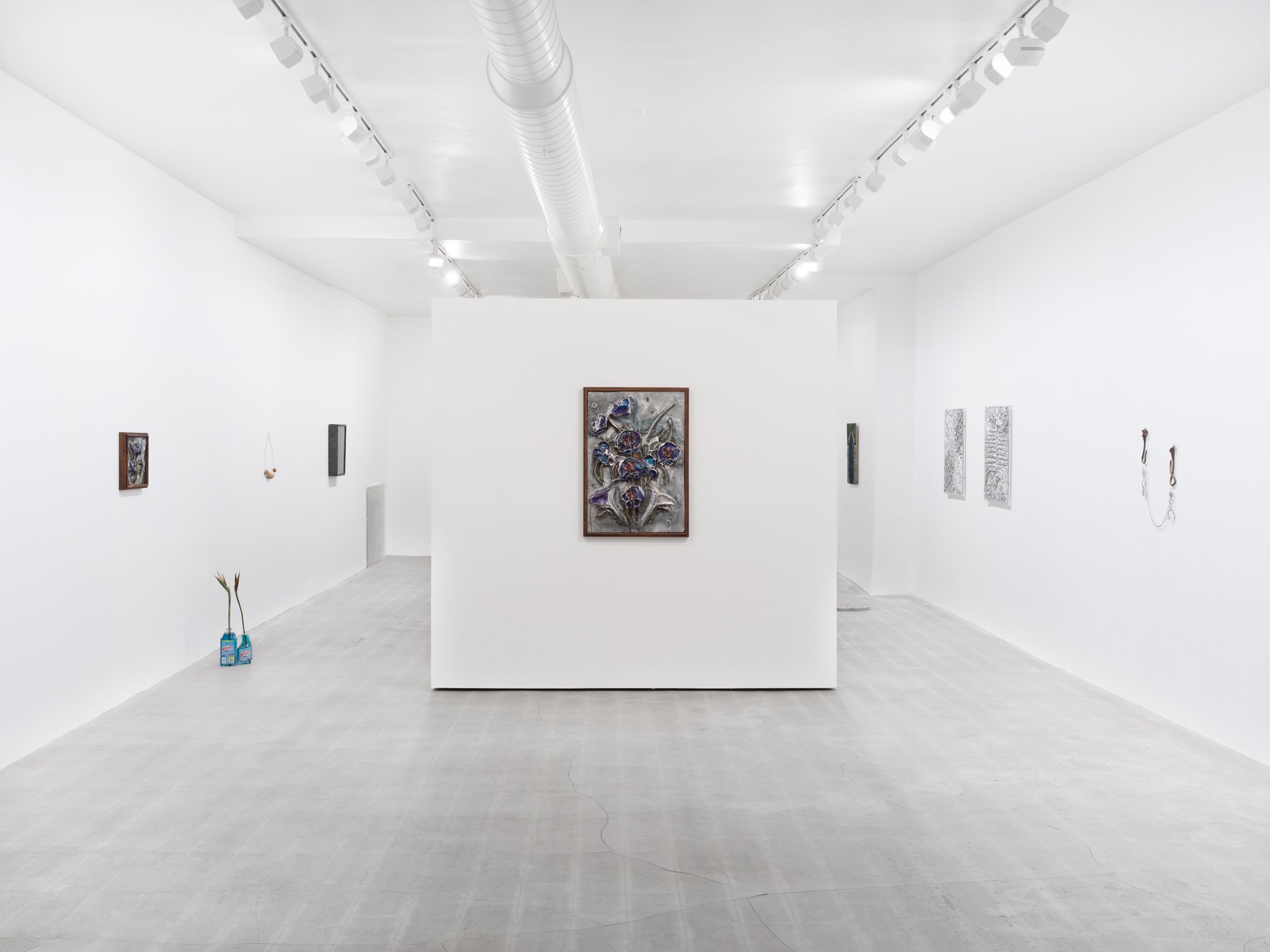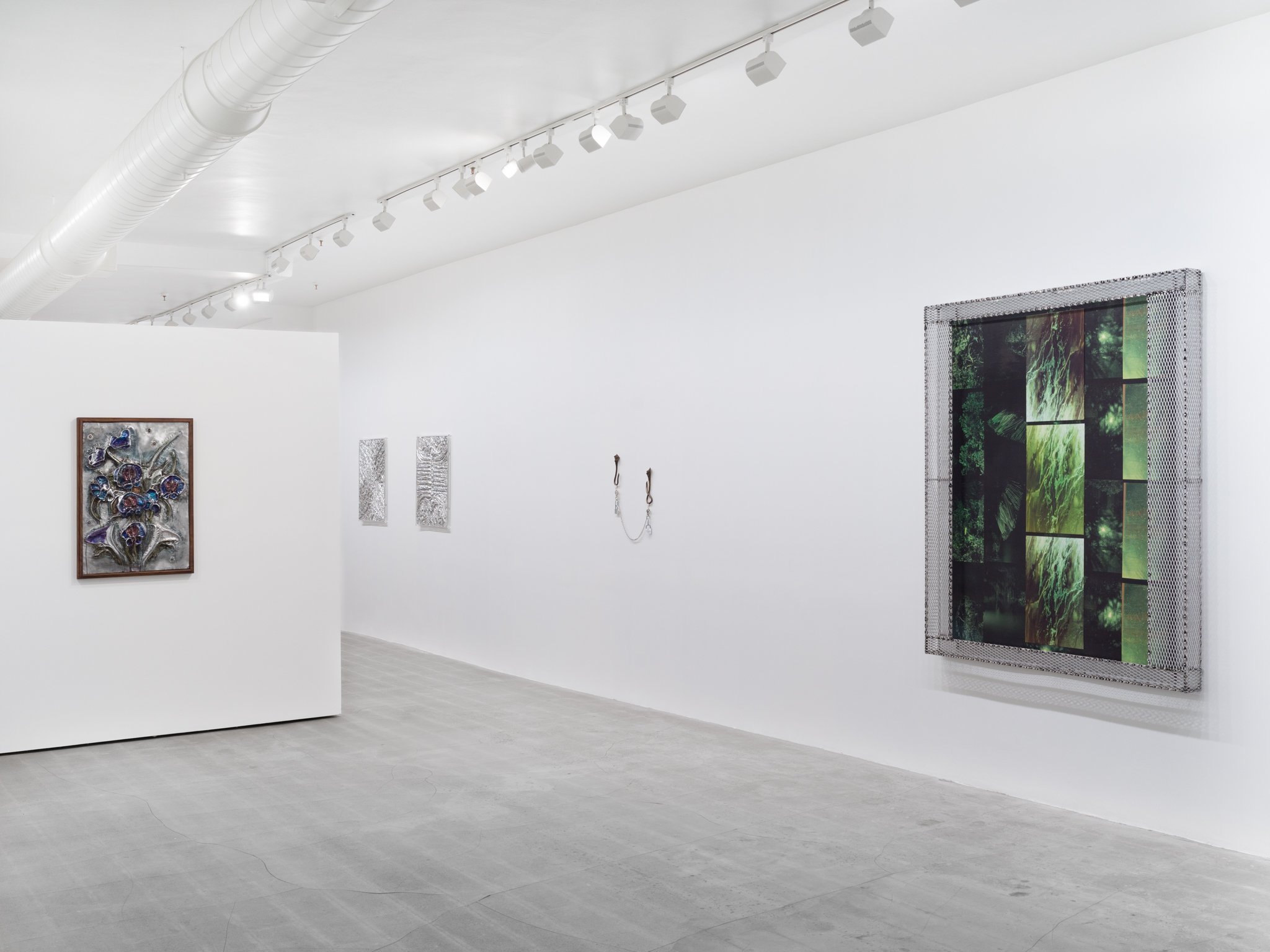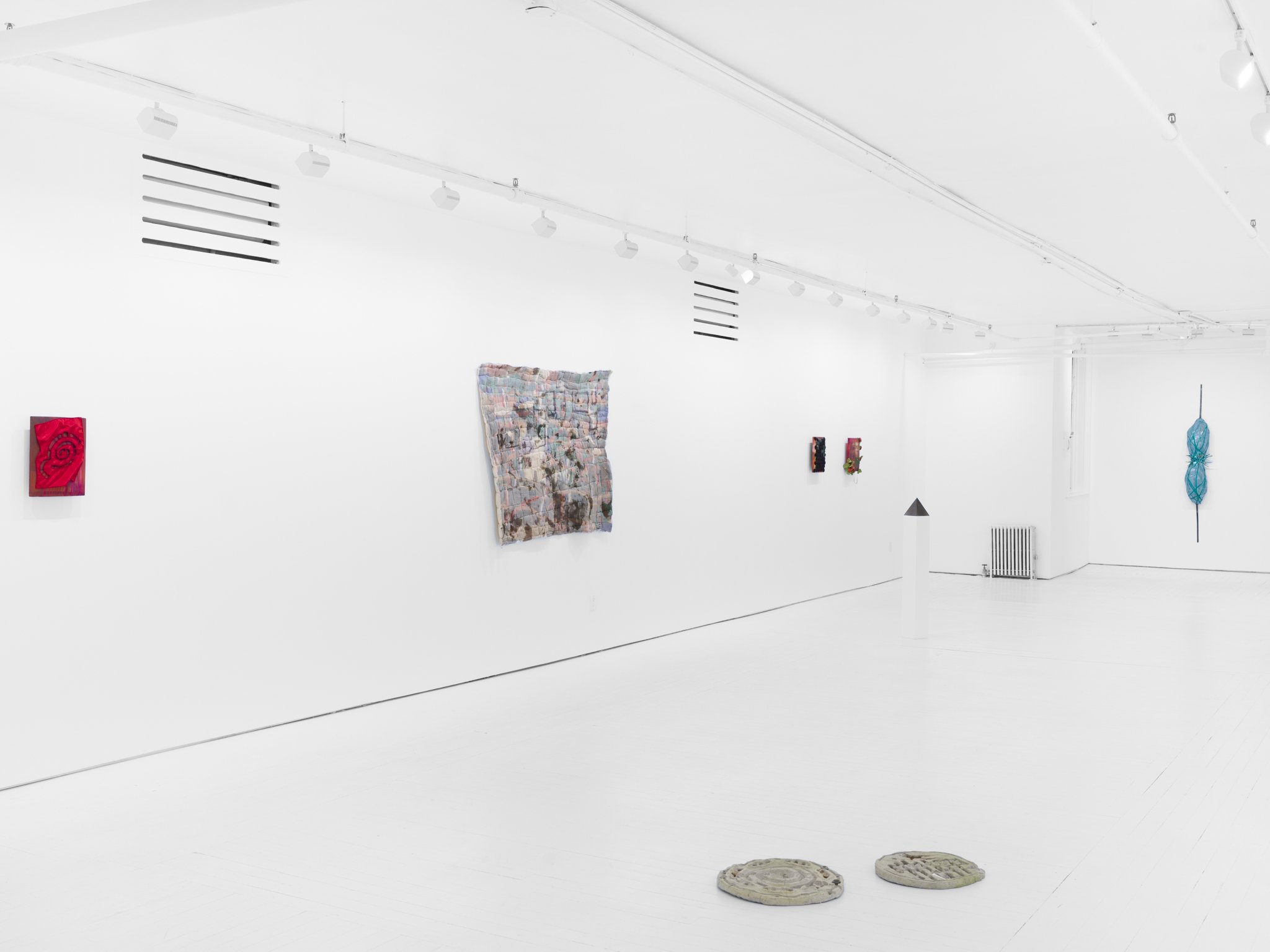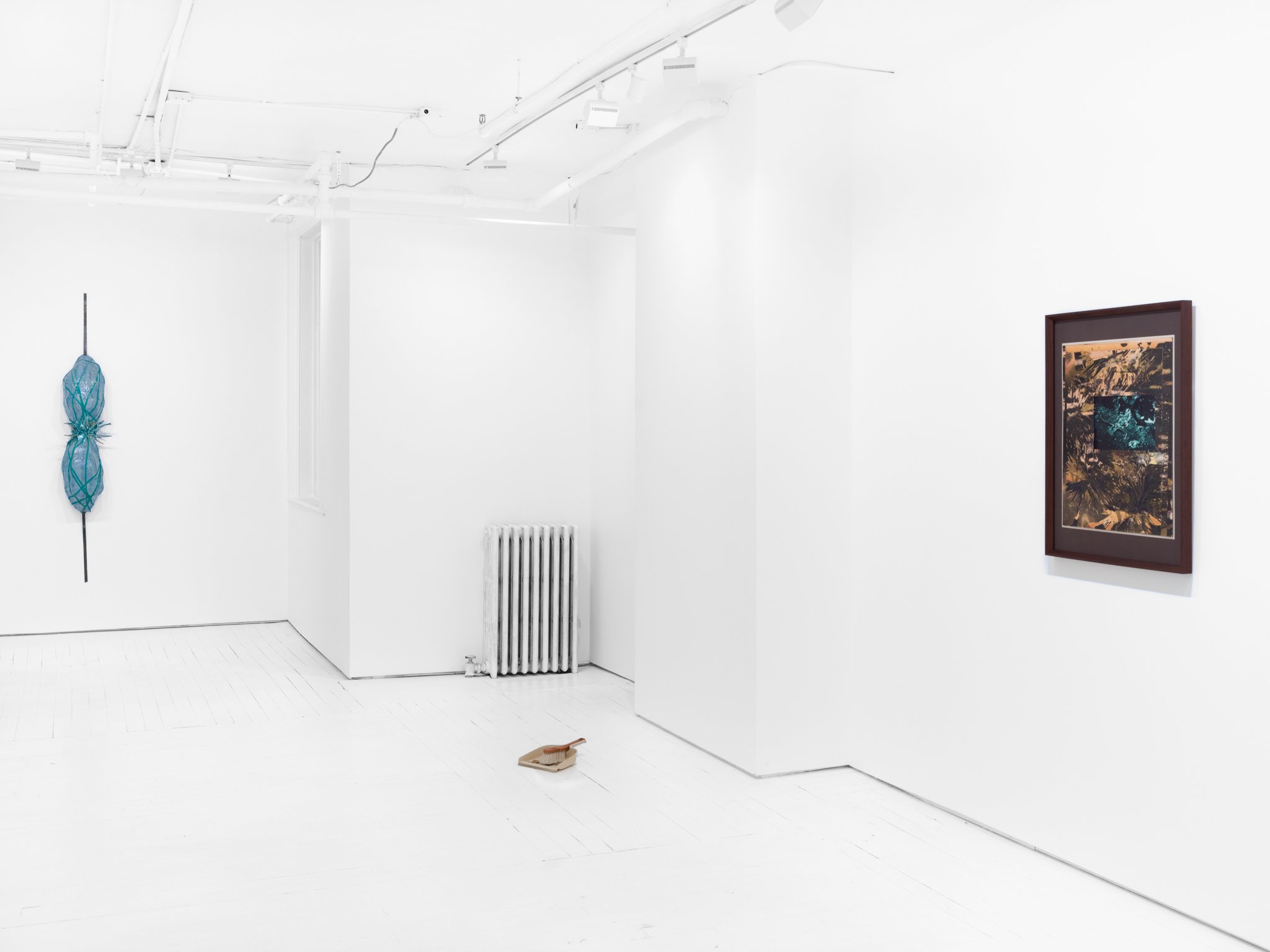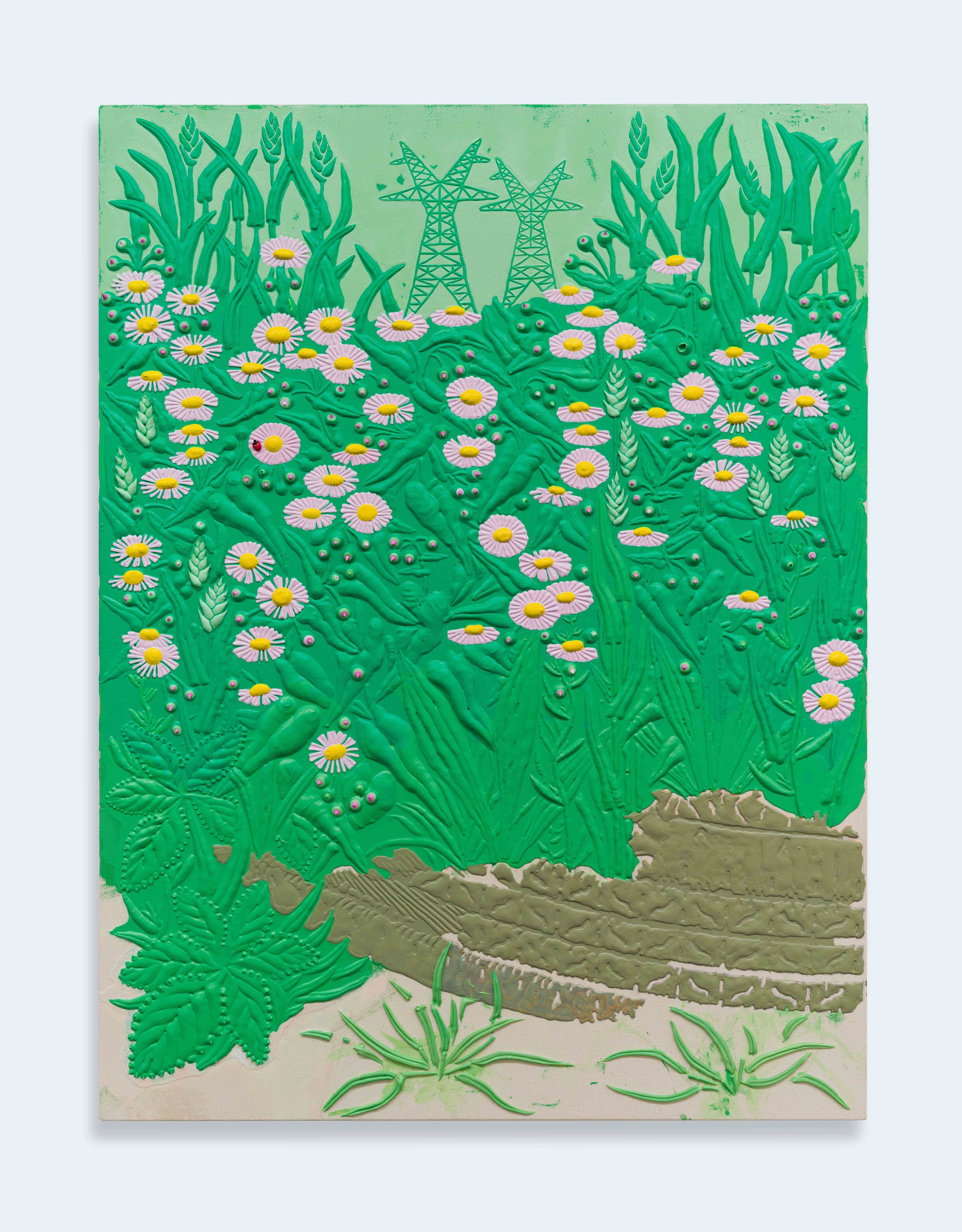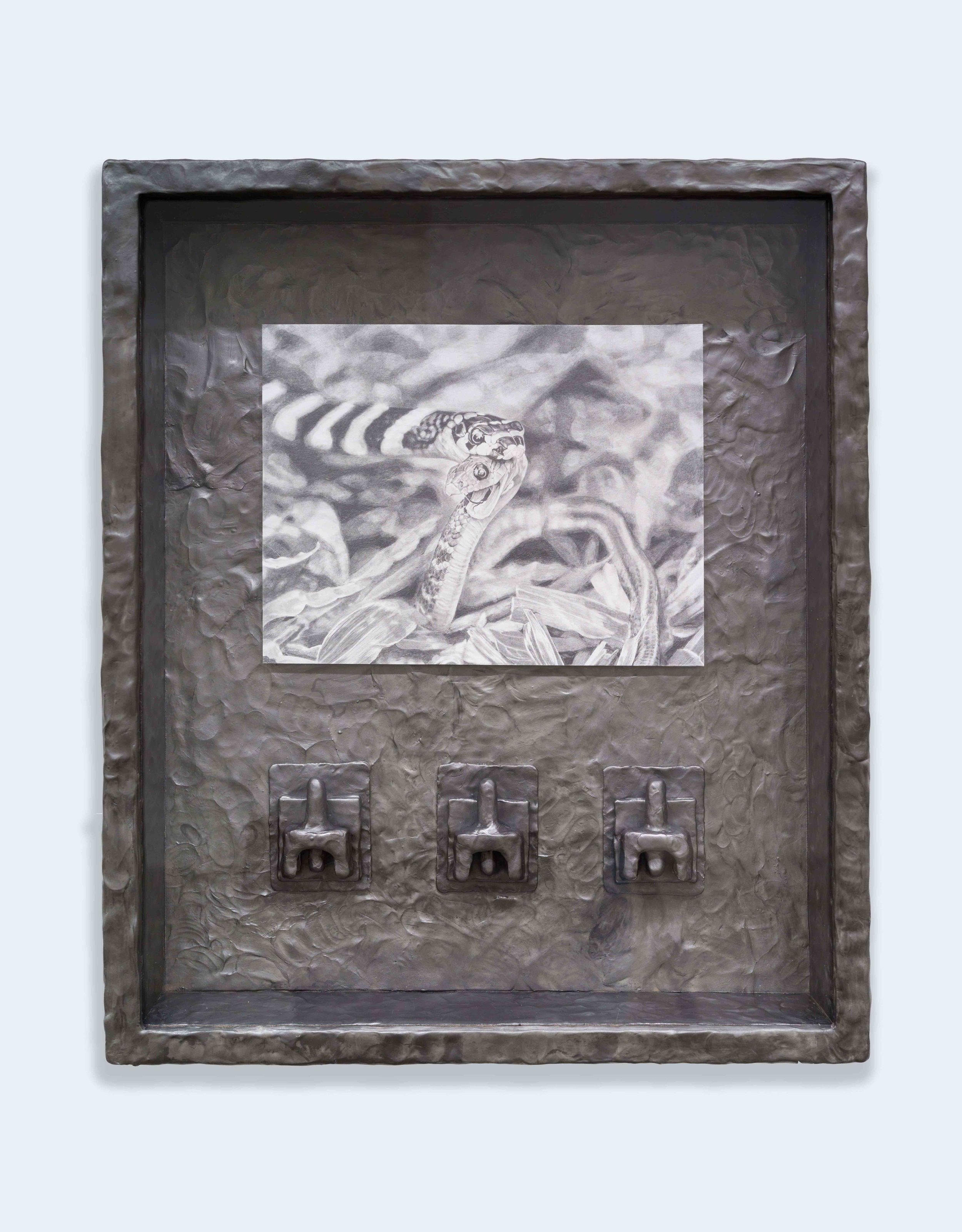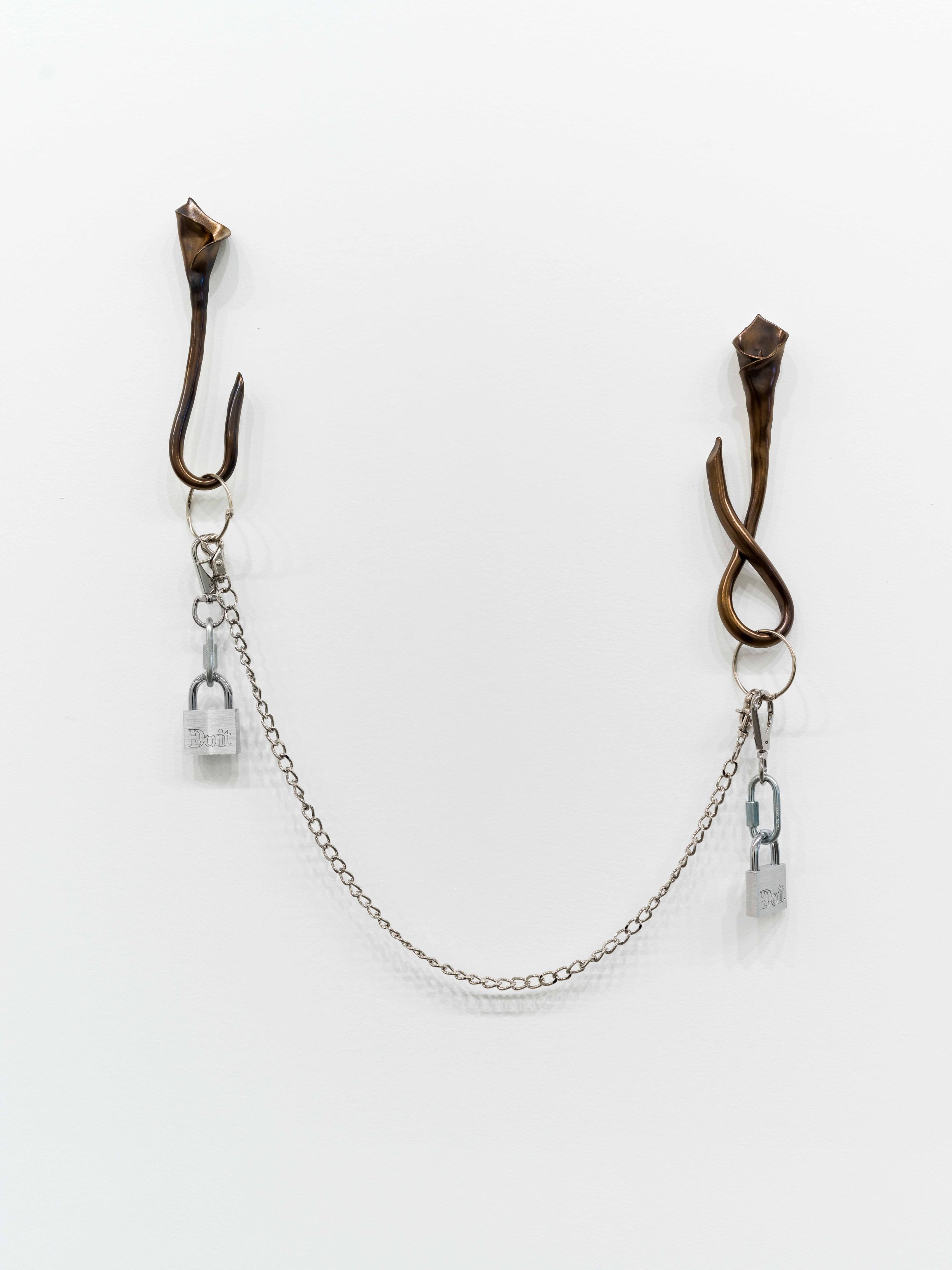Plant a Weed
Curated by Francesca Altamura
Salome Asega, Michael Assiff, Saif Azzuz, Ragini Bhow, Justin Chance, Justin Cloud, Antonia Kuo, Aryana Minai, Christine Egaña Navin, Em Rooney, Emma Safir, Rodrigo Red Sandoval, Tamara Santibañez, Sydney Shen, Molly Soda, and Monsieur Zohore
June 17 - July 22, 2023
Jack Barrett presents Plant a Weed, a group exhibition that brings together new and existing works by sixteen artists, from New York City, Los Angeles, Pacifica and Mexico City. On view from June 17 to July 22, 2023, the exhibition is curated by Francesca Altamura, an independent curator and organizer based in New York, NY. The exhibition will mark the debut of new works by over sixteen participating artists.
The artists in Plant a Weed offer a counterpoint to what is understood as natural, offering an expansion of systems, of publics, and a glimpse into the lives lived and loved within the urban ecosystem. Street detritus, both natural and human-made, maps out a cosmos of the non-desirable. Paper towels, Windex, egg shells, cigarettes, mummified rats, scorpions, lollipops, hard-shell tacos, fabric, paper, plastic, leather, and other mixed debris coagulate to form a new ecology.
The scurrying of critters acts as a score for the de facto co-habitual relationship New Yorkers, human and non-human, share. While pizza rats embark on a quest for a slice and a subway seat, the Adams administration appoints a ‘Rat Czar,’ a Sisyphean display of control over the non-human taking place during a generation-defining housing and medical crisis.
Amidst meticulously manicured astroturf and glistening corporate lawns, a weed resolutely disrupts the imposed order of the grid, of who belongs here, and of authority. In this whimsical interplay of urban encounters, resilience emerges, dismantling the hedgerows between the imaginary borders that demarcate the natural and human worlds.
Several artists in the exhibition including Michael Assiff and Salome Asega have undergone extensive fieldwork to shed light on their artworks. In Assiff’s new paintings from 2023, he trucked cross country with a childhood friend, observing the infrastructure and plant life that grows alongside truck stops, highways and spaces frequented by long-haul truckers. The 3D-printed monster truck model, Asega’s RATs, literally printed in the shape of a rat, which first debuted in the 2022 iterations of Nuit Blanche and Munchmuseet’s Munch Triennale, delves into Risk Assessment Tools, or AI technological systems, that are used by city agencies to make biased decisions about bail, prison sentencing, welfare, medical benefits and housing services. Saif Azzuz excavates the colonial history of Collect Pond Park in Lower Manhattan. In We don’t want your kind here (No’-oh) from 2022, the steel fence acts as a physical symbol of relentless colonial campaigns to privatize and monetize land and natural resources once stewarded by the Lenape.
Both Antonia Kuo and Ragini Bhow are inspired by the mercurial and moody rhythms of New York City. Kuo combines the photography taken around her home and studio, with industrial processes she learned growing up in her family’s casting foundry to create two new photographs, Aftermath and Phosphor, both from 2023. The densely layered compositions are so far abstracted from their original meaning, yet portray an emotive story about the urban landscape. Bhow enters into a transcendental state to create Wood Entity from 2023. As a means of digesting the sights and sounds of the city, she articulates amoebic forms by pressing on the blank aluminum sheets bought from an industrial metal supply store. Similar to Kuo, Justin Cloud grew up in a family of farmers, mechanics, and engineers. He uses an ancient technique called “repoussé and chasing” to create Mood Graft and Knight Kitchen from 2023, an art form used around the world to ornate metal from chalices to armor. The artist uses a hammer and chisel to shape the metal into realistic depictions of flowers.
Aryana Minai presents View and Embodied & Embedded IV from 2022, as emblems of architectural design elements. Minai creates a liquid pulp from recycled paper, then presses objects like bricks and stones, salvaged from the street, textile woodblocks and other urban artifacts, to create fossil-like imprints of the cities which she calls home, Tehran and Los Angeles. Tamara Santibañez creates new work from 2023 that exposes and interweaves meaning assigned to industrial materials, architecture and objects used for mass socio-political and symbolic actions. The artist renders two flowers, commonly used symbols of peace and resistance, in glazed porcelain that delicately hold a chain of keys and a heart-shaped lock at the center. For Santibañez, these objects represent the ‘lock bridge,’ where couples inscribe their names on padlocks, lock it on the bridge and throw the keys into the river. These gestures of eternal love are cut short due to ongoing maintenance costs and the structural integrity of the bridge being endangered by the added weight. Rodrigo Red Sandoval’s handmade manholes, constructed in Amsterdam and clogged with urban detritus from New York City, activate the gallery floor. In Sandoval’s new molds from 2023, cigarette butts and various debris clog the mouth-like openings, truncating the possibility of waste disposal. Sandoval lays bear the entanglements of global environmental degradation, breaking down the boundaries between the here vs. there of waste offsets. Within a series of three new small-scale works from 2023, Emma Safir fabricates portals between the inside and outside worlds. She first takes iPhone images from the streets, which are obscured through digital manipulation. These abstract backgrounds are printed on silk, then further distorted through traditional methods of fiber manipulation.
On view at Jack Barrett for only two weeks before the pandemic, Molly Soda presents for the second time, two vinyl windows, which incorporate “invasive” weeds that were grown in her apartment. These sculptures act as windows into the artist’s private space, as reminders that no matter how disorganized and chaotic her life becomes, the surrounding environs will always continue to flourish. Sydney Shen revives a sculpture from 2015, Please Don’t Eat Me, that consists of a dustpan and scorpions sourced from Etsy, a reminder of the life that exists between floorboards, in the walls, in the alleyways between apartments and on online marketplaces. Christine Egaña Navin questions utility and value, especially of objects, structures and processes made by humans and organically. In Botiquín 1.22 from 2018, she encases a mummified two-toed adult female Ring Tailed Cat, 22 two-dollar bills, a Blow Pop, two dehydrated Taco Bell hard-shelled tacos, and a mummified adolescent male Brown Rat, among many other objects, in epoxy taxidermy putty.
In Hamlet from 2022, Justin Chance uses a number of techniques to create his quilts, with wet and felt needle that is arranged, collaged, and sewn together with fibers and wool that are then encased in silk organza. His title refers to human settlements that are not legal entities and have no local government or official boundaries. Chance’s work represents an idealized version of rural life, where manicured lawns are within close commuting distance of a city. Em Rooney is also inspired by nature and creates botanical forms with large-scale industrial processes and materials. In trouble every day from 2022, a blue cocoon is made from steel, indigo-dyed rice paper, rhinestones, and synthetic whale boning, among other materials. In stark contrast, Monsieur Zohore’s material of choice is paper towels, an artistic practice that has been honed in for over ten years. In a new work from 2023, he presents a relic of old New York City, a plastic takeaway bag emblazoned with the former two-dimensional I ❤ NY logo. In another new work from 2023, Zohore depicts an iconic image of Mierle Laderman Ukeles performing Touch Sanitation Performance: “Handshake and Thanking Ritual” with Sanitation Workers of the New York City Department of Sanitation from 1979–80. Over the course of 11 months, Ukeles shook the hands of all 8,500 sanitation workers, thanking them for their service. Zohore re-writes this iconic image from performance history by adding the world's most expensive handbag ($450,000), designed by former Louis Vuitton Creative Director Marc Jacobs.
In this whimsical interplay of encounters, the resilience of artists thriving in the city is evident, as they subvert the borders between the haves and the have-nots, the locals and the interlopers, the perfect specimens and the riff-raff. The weed will always prevail.
Pictured: (Detail) Justin Cloud, Knight Kitchen, 2023, aluminum, patina, prehnite stones, walnut artist frame, 34.5 x 24 in
Salome Asega RATs (model), 2022 Plastic (3D printed) 12 x 12 x 25 inches
Michael Assif Untitled 2, 2023 Plastic and latex on canvas 48 x 36 inches
Michael Assif Untitled 1, 2023 Plastic and latex on canvas 48 x 36 inches
Michael Assif Untitled (Rat Worship, Karni Mata), 2015 Plastic and latex on disarmed NYC rat trap 8.5 x 13.7 x 7.6 inches
Saif Azzuz We don’t want your kind here (No’-oh), 2023 Steel and enamel 58 x 39 x 1 inches
Saif Azzuz Indian Heaven, 2022 Acrylic and enamel on canvas 70 x 50 inches
Ragini Bhow The Weight of Shadow III, 2023 Ritualistic ash suspended in resin 6 x 6 x 6 inches
Ragini Bhow Wood Entity I, 2023 Aluminum, with plexi frame 30 x 24 inches
Ragini Bhow Wood Entity II, 2023 Aluminum with plexi frame 30 x 24 inches
Justin Cloud Knight Kitchen, 2023 Aluminum, patina, prehnite stones walnut artist frame 34.5 x 24 inches
Justin Cloud Mood Graft, 2023 Aluminum, patina, prehnite stones walnut artist frame 11.5 x 14.5 inches
Justin Cloud Hamlet, 2021 - 2022 Quilted wet and needle felted wool, cotton, silk and dye 48 x 60 inches
Antonia Kuo Phosphor, 2023 UV-printed photographs, c-prints on panel in aluminum artist frame 63 x 51 x 2 inches
Antonia Kuo Aftermath, 2023 Unique chemical painting on silver gelatin paper, c-print in wood frame 32 x 24 x 1.5 inches
Aryana Minai Embodied & Embedded IV, 2022 Dyed handmade paper, mounted on aluminum 48 x 42 inches
Aryana Minai View, 2022 Dyed handmade paper, mounted on panel 22.5 x 18.5 inches
Christine Navin Botiquin 1.22, 2018 Mummified 2 toed adult female Ring Tailed Cat, (2) Big Mama® pickled sausages, palo raspa lengua, (22) United States two-dollar bills ($2), Blow Pop® lollipop, Amborella Organics® seed-bearing lollipop, (2) dehydrated Taco BellTM hard shelled tacos, mummified 2 toed adolescent male Brown Rat, LifeStraw® personal water filter, Slim Jim® smoked meat stick, electroluminescent wire, compression bags, plexiglas, wood frame, encased in epoxy taxidermy putty 33 x 22 x 5 inches
Christine Navin Boutiquín 3.25.23 2023, 2023 Graphite on paper, Narcan® encased in taxidermy putty 29 x 18 x 3.5 inches
Em Rooney trouble everyday, 2022 Steel, indigo dyed rice paper, pigmented resin, Mylar, stones, rhinestones, synthetic whale boning, steel boning 80.5 x 10 x 11 inches
Em Rooney Malatesta's Neck, 2021 Pewter, egg shells, metal chain, hardware 18 x 13 x 2 inches
Emma Safir Green Rose I, 2023 Silk, neoprene, pine, upholstery foam, housepaint, flashepaint 14 x 11 inches
Emma Safir Silk Rose II, 2023 Silk, neoprene, pine, upholstery foam, housepaint, flashepaint 14 x 11 inches
Emma Safir Silk Rose III, 2023 Silk, neoprene, pine, upholstery foam, housepaint, flashepaint 14 x 11 inches
Rodrigo Red Sandoval Canal Street, 2023 Calcast 300, objects and debris collected around NYC 16 x 16 x 1 inches
Rodrigo Red Sandoval First Kiss Street, 2023 Calcast 300, objects and debris collected around NYC 20 x 20 x 1 inches
Rodrigo Red Sandoval South street, 2023 Calcast 300, objects and debris collected around NYC 19 x 19 x 1 inches
Rodrigo Red Sandoval Many way street, 2023 Calcast 300, objects and debris collected around NYC 18 x 18 x 1 inches
Rodrigo Red Sandoval Junction, 2023 Calcast 300, objects and debris collected around NYC 19 x 19 x 1 inches
Tamara Santibanez Two entwined and rampant plants, 2023 Glazed porcelain lock-and-keys, chain and hardware 21 x 16 x 2 inches
Sydney Shen Please Don't Eat Me, 2015 Dustpan, hand broom, scorpion specimens 3 x 10 x 13 inches
Molly Soda Opening Up (Vulnerable), 2020 Vinyl window, vinyl decals, window box, weeds 36x 24 inches
Molly Soda How I Stopped Being Self Conscious And Caring What People Think About Me, 2020 Vinyl window, vinyl decals, window box, weeds 36 x 24inches
Monsieur Zohore R.I.P. (A Portrait of My Old Friends), 2023 Paper towel and frame 36 x 36 inches
Monsieur Zohore The Real Real (One Mans Trash Blah Blah), 2023 Mixed Media on Canvas 48 x 48 inches

